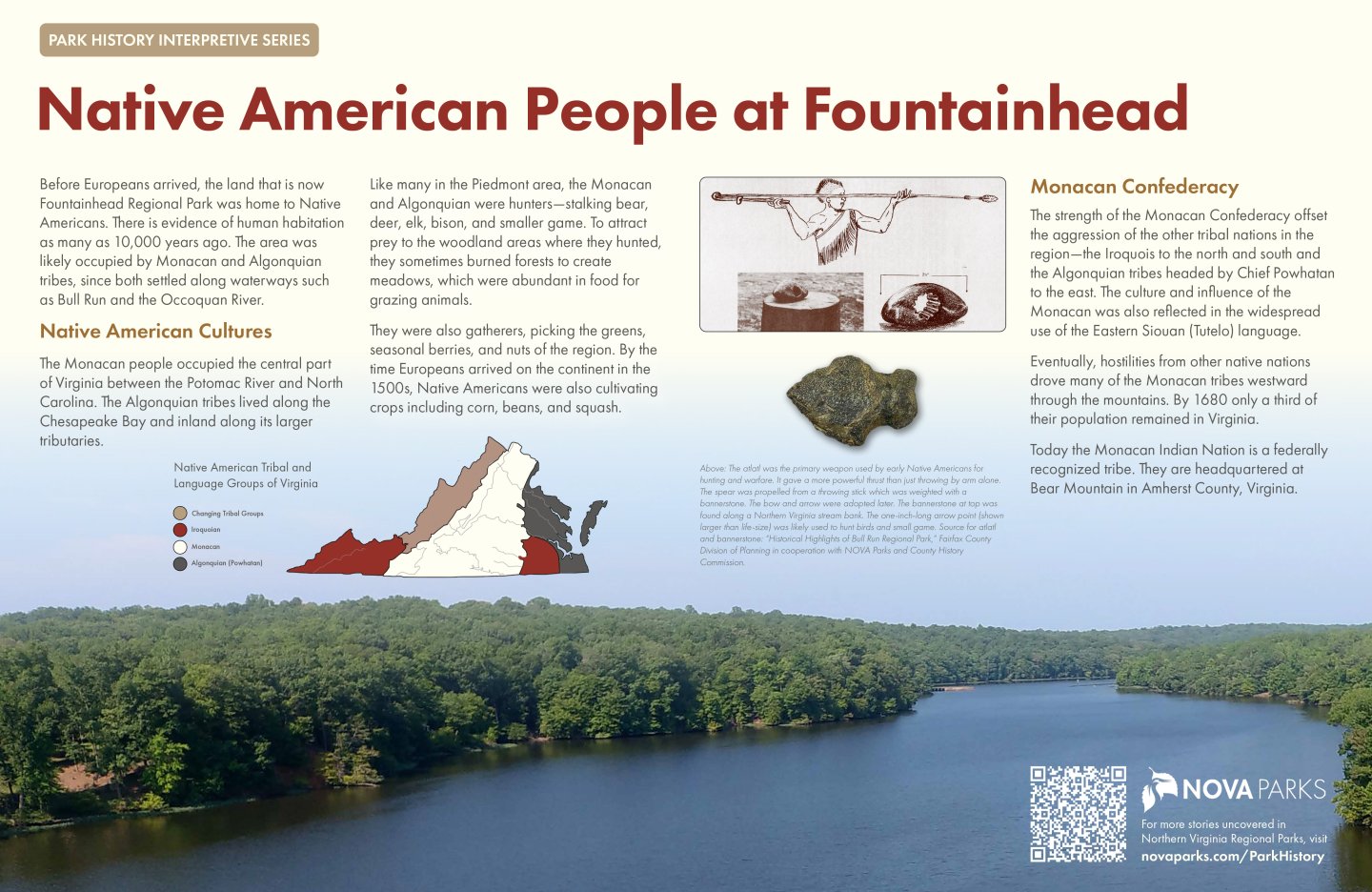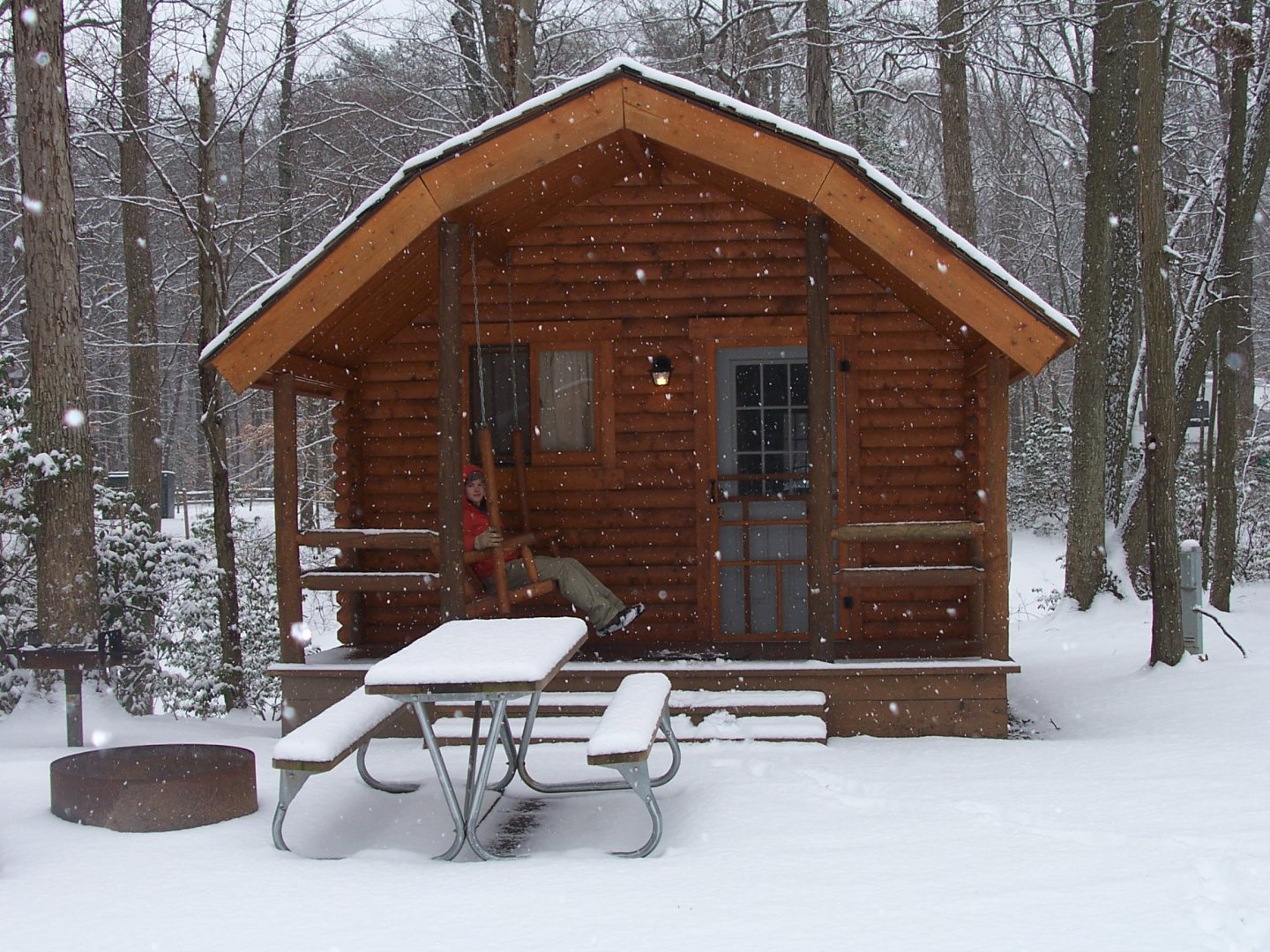Fountainhead Regional Park
Park History Interpretive Series: Native American People at Fountainhead

Before Europeans arrived, the land that is now Fountainhead Regional Park was home to Native Americans. There is evidence of human habitation as many as 10,000 years ago. The area was likely occupied by Monacan and Algonquian tribes, since both settled along waterways such as Bull Run and the Occoquan River.
Native American Cultures
The Monacan people occupied the central part of Virginia between the Potomac River and North Carolina. The Algonquian tribes lived along the Chesapeake Bay and inland along its larger tributaries.
Like many in the Piedmont area, the Monacan and Algonquian were hunters—stalking bear, deer, elk, bison, and smaller game. To attract prey to the woodland areas where they hunted, they sometimes burned forests to create meadows, which were abundant in food for grazing animals.
They were also gatherers, picking the greens, seasonal berries, and nuts of the region. By the time Europeans arrived on the continent in the 1500s, Native Americans were also cultivating crops including corn, beans, and squash.
Monacan Confederacy
The strength of the Monacan Confederacy offset the aggression of the other tribal nations in the region—the Iroquois to the north and south and the Algonquian tribes headed by Chief Powhatan to the east. The culture and influence of the Monacan was also reflected in the widespread use of the Eastern Siouan (Tutelo) language.
Eventually, hostilities from other native nations drove many of the Monacan tribes westward through the mountains. By 1680 only a third of their population remained in Virginia.
Today the Monacan Indian Nation is a federally recognized tribe. They are headquartered at Bear Mountain in Amherst County, Virginia.


